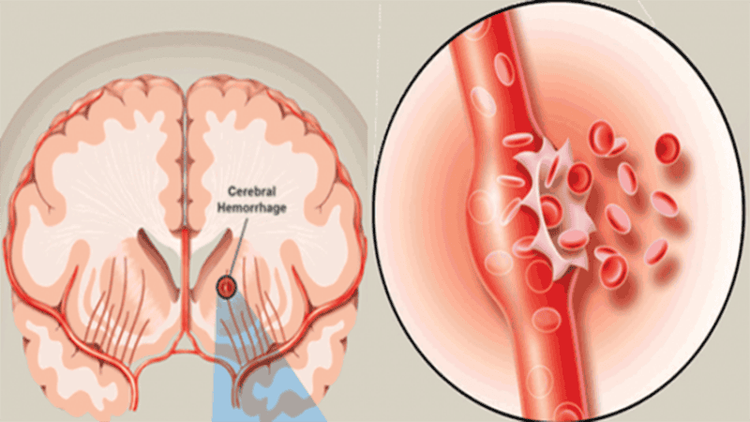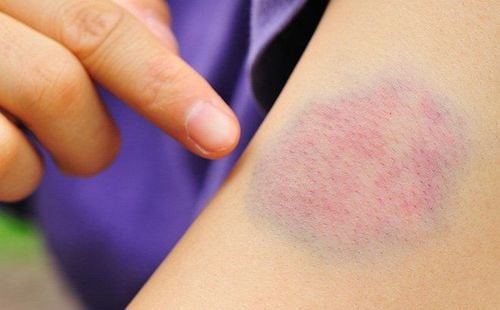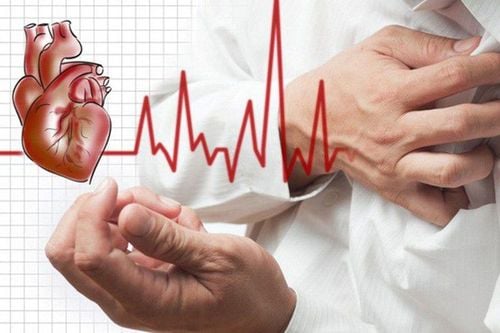This is an automatically translated article.
The article was consulted with Dr. Nguyen Van Duong - Interventional Cardiologist - Cardiovascular Center - Vinmec Central Park International General Hospital.Red spots and bruises under the skin may seem harmless, but they can also be signs of bleeding in the blood vessels. The cause of this condition may be due to a blood protein disorder, which causes blood vessels to become fragile, leaking red blood cells out into the lumen.
1. What is vascular hemorrhage?
Hemorrhagic vascular disease is a condition in which red blood cells leak out of the blood vessel, leading to the appearance of signs of bleeding under the skin such as petechiae, purpura, or bruises.One of the most common causes of vascular bleeding is dysproteinemia. These are conditions that produce an abnormal protein or affect the amount of certain normal proteins in the blood, causing blood vessels to become fragile, leading to bleeding from the mucous membranes.
2. Starch degradation
Amyloidosis is a condition in which starch (amyloid) is deposited in blood vessels under the skin and subcutaneous tissue, causing the blood vessels to become fragile, causing bleeding. The site of bleeding is usually the upper extremities, whereas in contrast to immune thrombocytopenia, bleeding occurs mainly in the lower extremities. In some patients, amyloid can absorb clotting factor X leading to factor X deficiency. However, this deficiency is not usually the cause of bleeding. Symptoms of the disease are periorbital hemorrhage or purpura that develops after light skin contact, tongue hypertrophy, and no thrombocytopenia.Serological examination of the patients showed that the majority had increased light chain. Treatment depends on the severity of the disease and the extent to which other tissues are affected.

3. Increased cryoglobulinemia in the blood
Cryoglobulins are abnormal immunoglobulins that clump together in plasma when cooled or when flowing through the skin or under the skin of cold extremities. When cryoglobulins clump together in blood vessels, the vessels can leak, resulting in bruises and red sores on the skin. Monoclonal immunoglobulins formed in Waldenstrom's disease - macroglobulinemia (plasmacytic lymphoma) or in multiple myeloma are sometimes also present as cryoglobulin. Cryoglobulin is detected by the test.4. Bleeding due to hypergammaglobulinemia
It is a common bleeding vasculitis in women. Blood vessels are damaged by too high a concentration of gamma globulin in the blood. Small, slightly ridged hemorrhagic plaques often appear on the lower legs, leaving small brown spots. Many patients present with immunocompromised manifestations (eg, Sjögren's Syndrome, SLE).
5. Hyperviscosity syndrome
Hyperviscosity syndrome occurs when a person has too much of a protein in the blood (immunoglobulin), most commonly from blood cancers such as macroglobulinemia (high-weight globulin) or multiple myeloma. Excess immunoglobulins increase blood viscosity and cause blood to move slowly through the blood vessels. Hyperviscosity syndrome restricts blood flow to the skin, fingers, toes, nose, and brain. Blood vessels become full of blood and can leak, causing bleeding under the skin. Common symptoms are recurrent nosebleeds and bleeding gums. When the viscosity of the blood becomes too high, the patient can also have heart failure or stroke.Above are some of the possible causes of blood vessel bleeding. Please follow the website: Vinmec.com regularly to update many other useful information.
Please dial HOTLINE for more information or register for an appointment HERE. Download MyVinmec app to make appointments faster and to manage your bookings easily.
Reference article: msdmanuals.com













